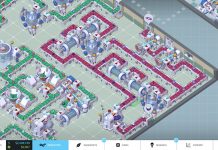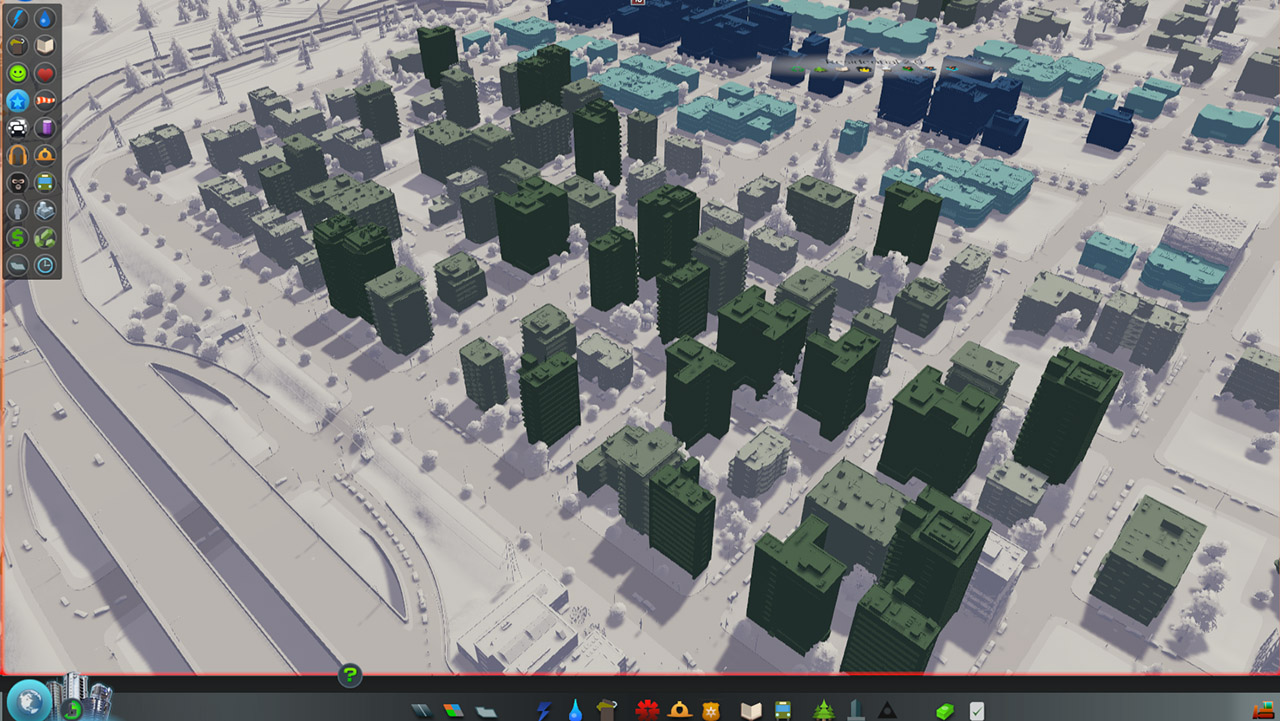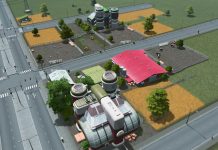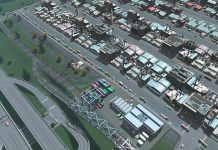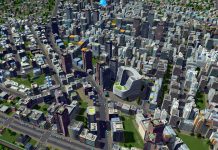Introduction
[postad]This guide attempts to explain how residential zones work in Cities Skylines. Although they are similar to the famous Simcity 4 there are certainly not identical.
Zoning
Just like in the famous SimCity series you will need to designate land for your citizens to construct housing on. In Cities Skylines zoning is completely free. However zoning can only be achieved on the white squares that appear next to roads. All roads have a maximum range of 4 squares ensuring that buildings will always have access to a road. Highways have no zoning space.
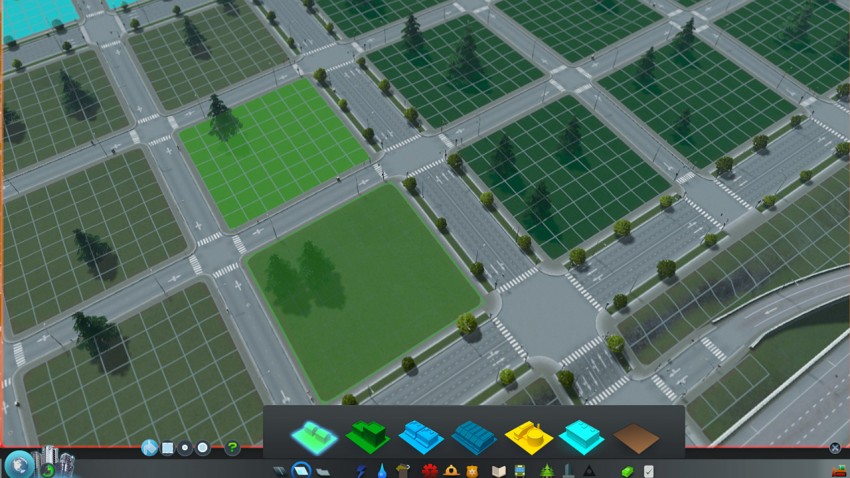
Keep in mind that you can use different zoning tools. The default “fill” bucket is not the most efficient way. Personally I use the second option called “Marquee” that allows you to drag zones like in SimCity.
Residential buildings can Level up*plieng*
Whilst playing Cities Skylines you will sometimes hear a lot of pinging sounds. These are your buildings increasing their level. All residential buildings can increase their level on a scale from 1 to 5.
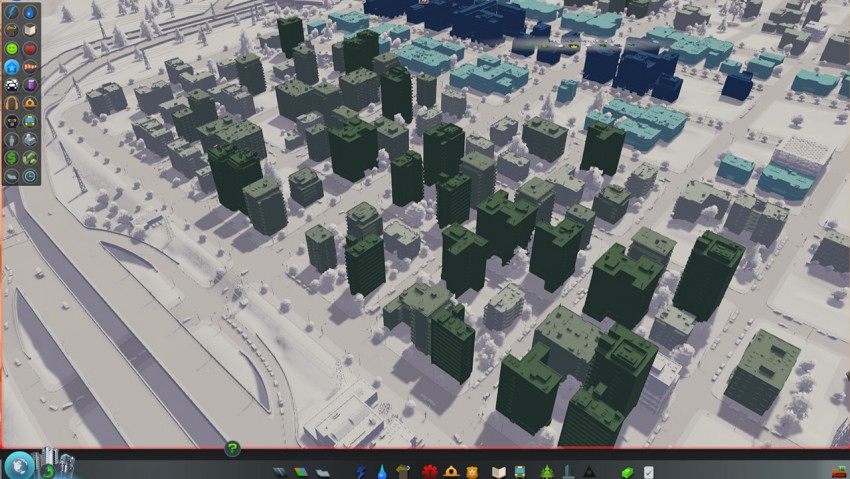
But what is the point of these levels? Leveling up your residential buildings has a few advantages
- Higher level residences provide space for additional families
- Higher level residences tolerate higher tax levels
How to level up your Residential buildings
Once certain requirements are met your buildings will automatically transform to the next level. When this happens the building will show reconstruction and a sound will be played.
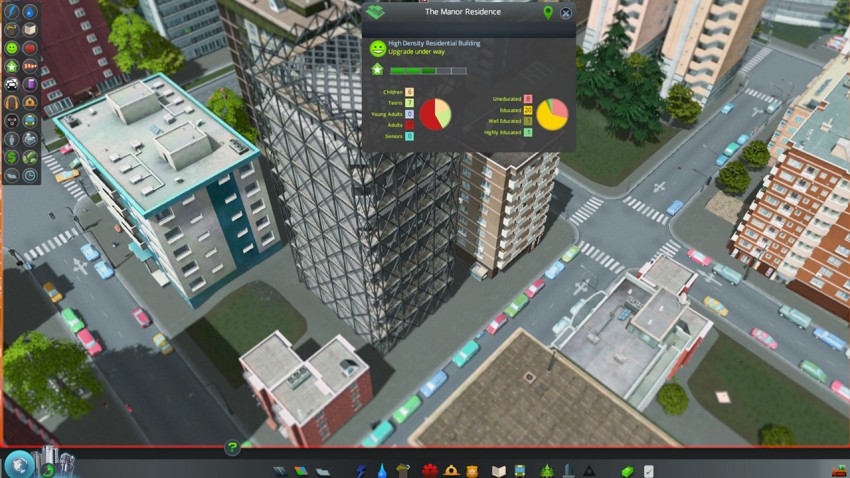
In order for residences to level they require the following
- Access to education (level 4 needs university)
- Increased land value
If you are unsure why your buildings are not upgrading then you can simply use the ingame tooltip and hover over the upgrade bar. Then the game will tell you what that specific house is lacking.
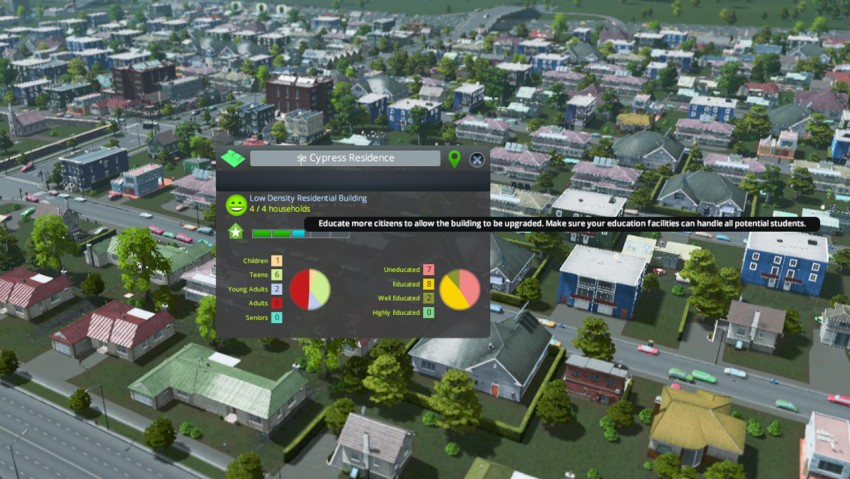
How to increase Education Level
In Cities Skylines there are three levels of education
- Elementary school: Provides basic education to children making them “educated”
- High school: Provides education to young adults making them “well educated”
- University: Provides education to adults making them “highly educated”
Education your citizens (or Cims) is easy. All you have to do is make sure that you have enough buildings to keep the info graphic slider in the green. Like any service building you must make sure all roads show up green on your educational network. Be ready to invest a lot, with 48000 inhabitants I am using 12 elementary schools!
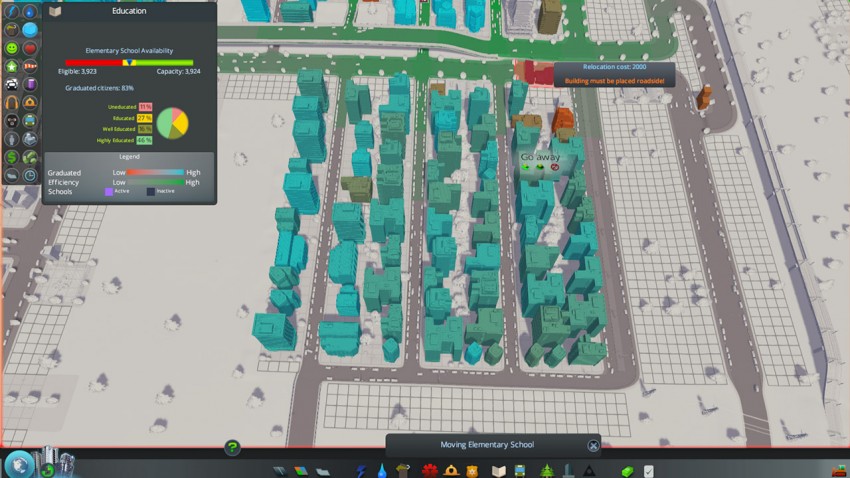
As a final tip I recommend to regularly check the education levels of through the Education overlay
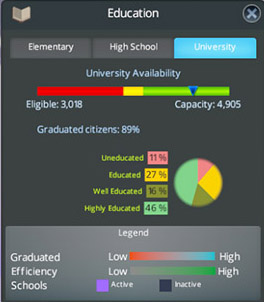
How to increase Land value
Leisure
The land value for Residential areas is primarily determined by the leisure rating. There is a good chance that you are reading this without ever noticing that specific overlay. So let’s check it out.
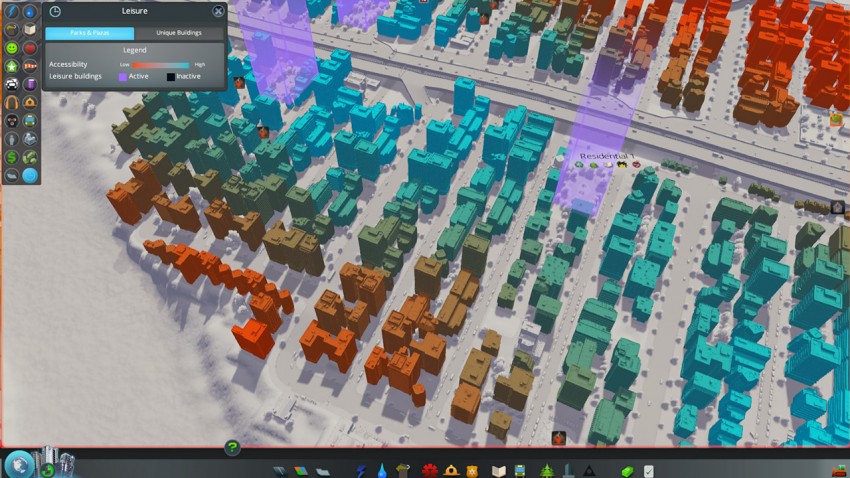
Leisure is improved by adding decorations, specifically the parks and plaza’s. There are a few choices and their range (radius) are all identical. However they greatly differ in upkeep and construction cost. Therefore I tend to use the most expensive parks to boost my land value. So far I did not have time to confirm the difference in impact.
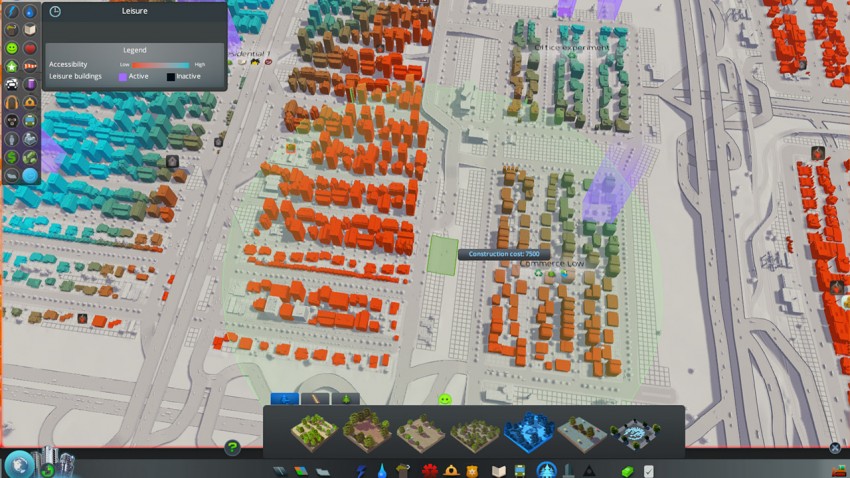
So if the game is telling you a building needs a higher land value just plop down some parks and you are golden! Not only do they raise land value, they also provide leisure which makes your citizens happy.
Policies
There are a few policies that can increase your land value:
- Parks and Recreation (increase land value around parks)
- High Tech Housing (Turns homes into smart homes which increases land value)
You can apply them city wide or by creating districts.
Low density or high density residential zone?
At a population of 7500 you unlock the ability to zone high density residential zones. Take a look at the differences
Low Density Residential zone
- Has 2-7 households
- Upgrades to beautiful villa’s
- Primarily attracts families (meaning children)
High Density Residential zone
- Has 9-26 households
- Upgrades to taller buildings
- Primarily attracts young adults
So which one to choose? In terms of efficiency the high density residential zones are superior. However they come with a few downsides.
Traffic impact
The high density residential zones generate a huge amount of traffic for multiple reasons. First of all they have a large number of inhabitants on the same surface. All of these families have to shop and go to work which means extra pressure on your roads. Furthermore they require more frequent visits from services like ambulances, hearses and police. Do not underestimate the impact because a hearse can easily stop in the middle of the road for 2 days while loading up a deceased citizen. When it is doing that it will block some traffic.
Free space reduction
Lastly you will need multiple educational and death care facilities covering the same area due to increased usage of these services. This will become problematic because usually you have already used up space by building roads and other services. In the worst scenario you have created a nice highway or you are located near a river. In that case you will need to place these service buildings inside your residential zones. Now instead of simply upgrading your zones you end up with a smaller zoned surface. Did you expect that? I certainly didn’t.
So what now?
In the end I definitely recommend to use the High Density Residential zoning simply because they look cool. But do not be blind for the disadvantages I j ust mentioned. Instead pace yourself and start out with a few high density zones at a time. Also remember that upgrading takes time. Therefore de-zoning upgraded low residential areas is a costly business. You will basically lose a lot of well educated citizens. So take it one step at a time, check your serivices and check that traffic map!
Questions?
I hope you enjoyed this guide. If you have further questions or remarks then please let me know in the comments.





